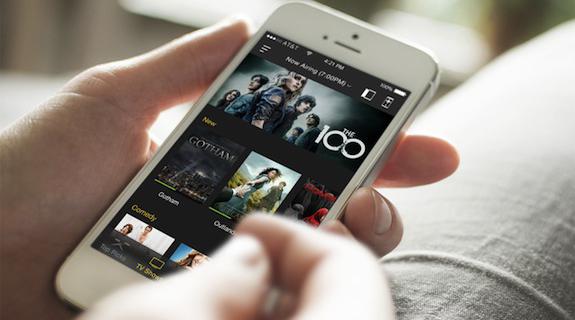It took Facebook nearly five years to reach 100 million users. It took Twitter and Tumblr longer than that. Meanwhile, a Silicon Valley company called Peel announced in October that its service has trumped them all, reaching that total in less than 30 months.
That’s not the fastest a tech company has reached 100 million users, but it’s pretty darn fast for one whose product is an app that turns your Android smartphone into a TV remote control – not because people don’t want their smartphones to be remote controls, but because Peel has done so in a marketplace already crowded with competition. Any cable service worth its salt has an app for remote-controlling its offerings on the TV screen from a mobile device, and the same goes for set-top boxes and smart TVs themselves. But where these apps were designed as bridges between the viewer and their respective companies’ one specific content offering, Peel was from the start designed to be nothing but the bridge itself, and one that could go to every content offering.
“The thing that really sets us apart is that we decided very early on to be global-first,” said James Ryan, Peel head of marketing. “It’s pretty easy to create a remote app for one service in one country… but to do it globally is really difficult.”
Founded by former Apple engineers Thiru Arunachalam (CEO) and Bala Krishnan (CPO/Chief Product Officer), Peel began as a hardware-based entity, with an external IR blaster that connected iPhones to TVs. Then the company convinced Samsung to build its IR blaster into their phones, prompting a shift from iOS to Android as the company found itself keeping pace with a device behemoth whose products reach consumers in more than 200 countries worldwide.
Today, Peel can enable phones to control thousands of devices in more than 100 countries, ranging from TVs to game consoles and even to air conditioners. Investors include Chinese technology behemoth Alibaba, which recently pumped $50 million into the company. As the Internet of Things continues its accelerating forward march, Peel will one day enable remote control of every electronic gadget its users encounter, all from a phone. For now, its TV functionality is still the main draw, and will be for a while. That’s because Peel is not just a channel changer, but a TV guide compatible with any cable system, a facilitator of social TV conversation, a TV recommendation and discovery engine, and an increasingly vital data collector – all rolled into one.
The sum total isn’t just a bridge between viewers and their TV content, but between TV networks and their viewers. This is most directly evidenced by Peel’s “True Tune-In” in-app advertisements, which give networks the chance to send mobile ad banners to users that, when clicked on, can actually change the channel on the user’s TV to the program in question. Currently, Peel is activated on somewhere between 30 and 40 million phones in the US alone, which means, Ryan said, that it’s possible for promos released in this manner to “move the needle as much as 15% for some of the smaller cable networks.” Whether that’s accurate or not, it’s hard to deny the potential power of a marketing tool that offers the ability to physically drive tune-in during live broadcast.
What’s more, unlike goods and services where great marketing can produce noticeable sales results, TV marketing is a realm where “none of the dollars spent are trackable,” said Grey. “Billboards and ads aren’t trackable in terms of ROI. Even online the spend is not trackable. You run a banner campaign and you never know how many of those people are tuning in.” Peel’s True Tune-In feature, on the other hand, is the rare opportunity in which the host of the ad is also the direct connection to the product being advertised, meaning it can account for exactly how many viewers the paid ad is bringing to the table.
Marketing data aside, Peel is also a highly targeted data collector, tracking items such as how many people click into a program and also how many people click out. It can even track how many people set up reminders through the app to watch a show. It can also facilitate the social conversation around TV with its Peel.in feature, which lets users create unique URLS of their own to connect to shows through the app, then share those links on Facebook or Twitter.
“The saying goes, ‘50% of your advertising works, but you just don’t know which half,’” said Ryan. “We’re part of the half that does.”
Tags:













































__twocolumncontent.jpg)











